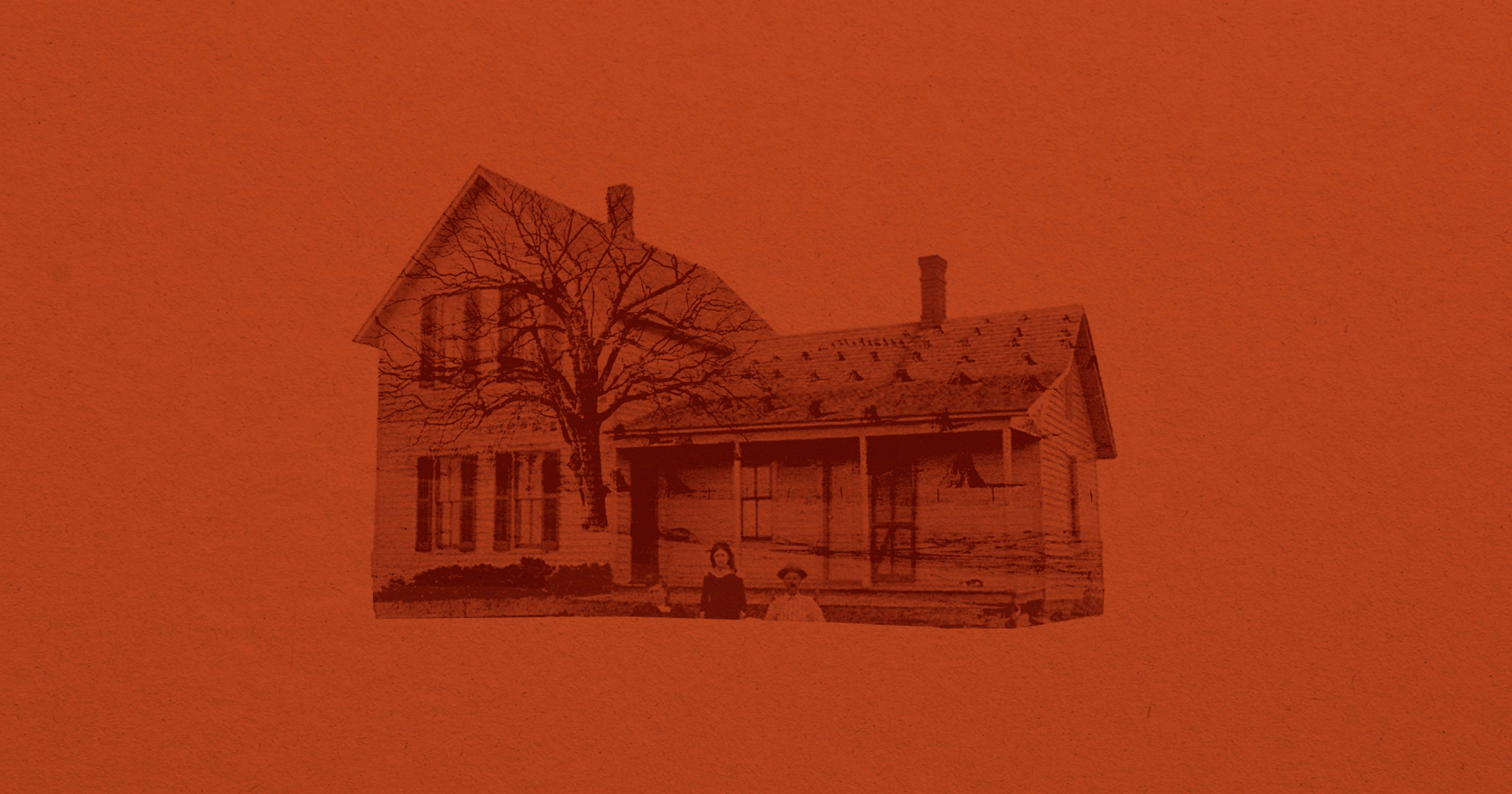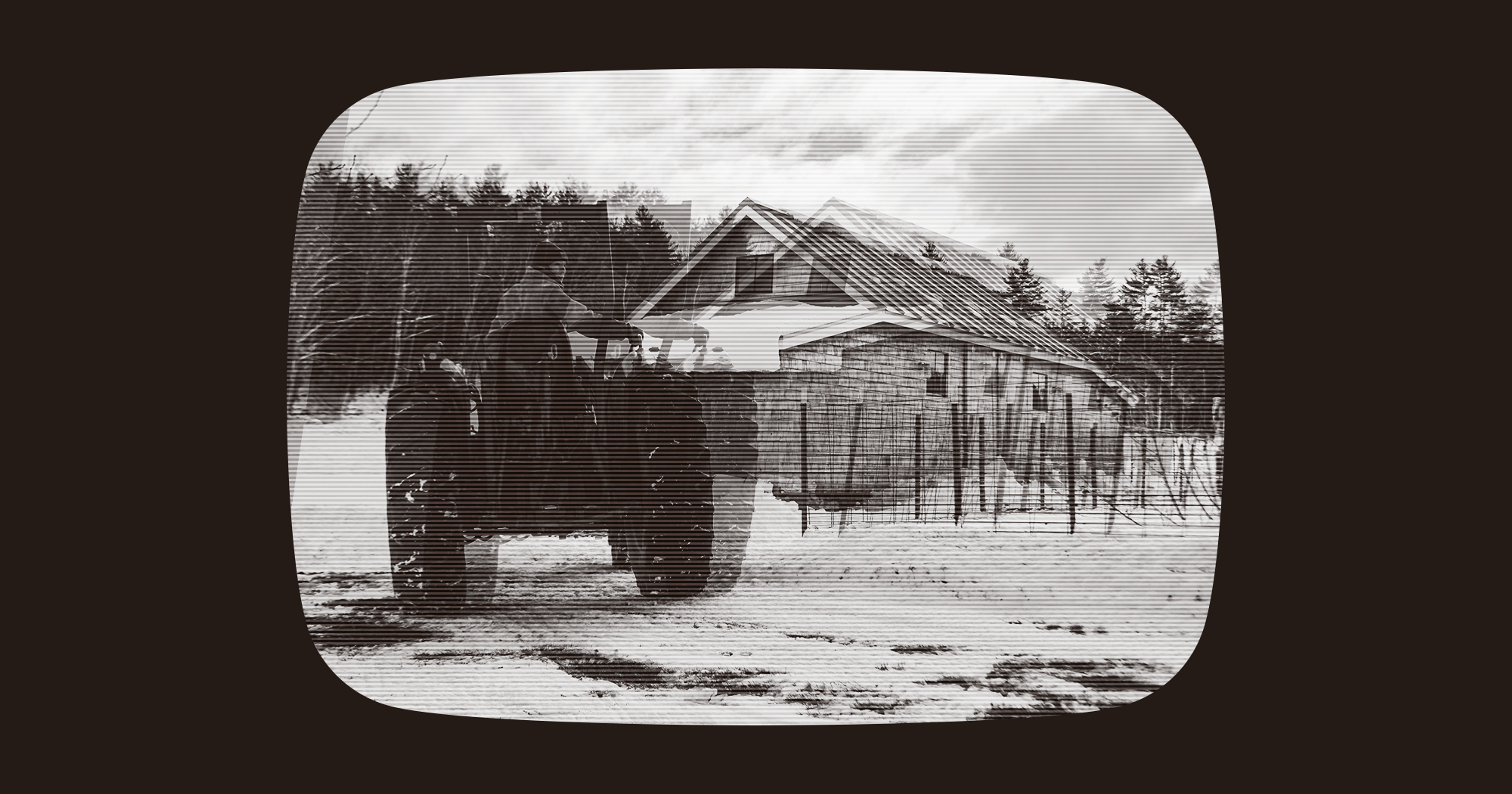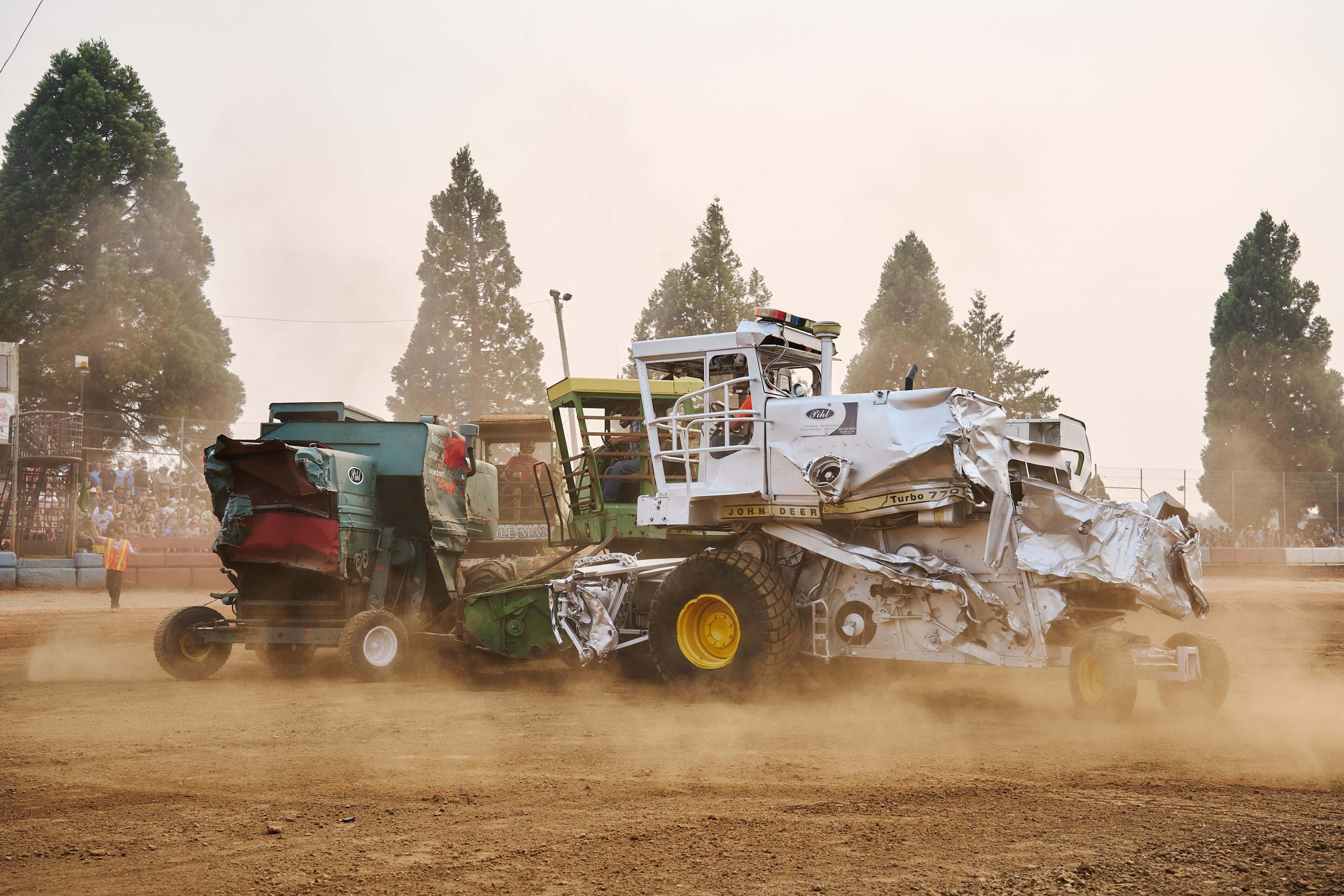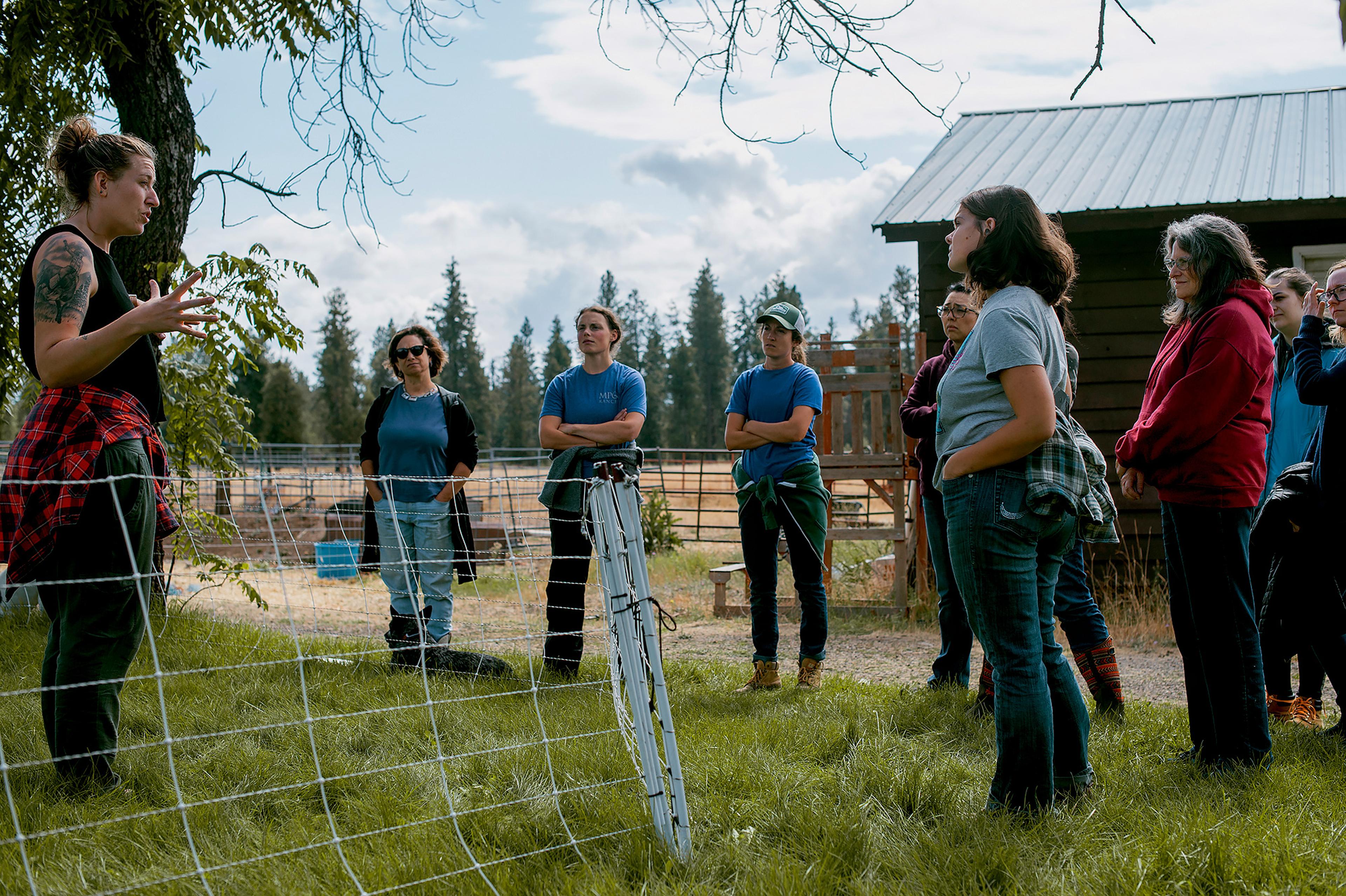Modern haunted farms are elaborate technical productions that can draw tens of thousands of visitors — and help keep some growers in business.
“I love to stand in the woods and listen to the people screaming.”
For Randy Bates (no relation to Norman), owner and managing director of the Bates Motel and Haunted Hayride, that screaming is the payoff. Last year, for its 33rd season, 60,000 people came to his family’s working Arasapha Farm in Glen Mills, Pennsylvania, to experience the attraction’s 125 actors prowling 25 sets for victims. One of the oldest and most elaborate of these modern haunted attractions (outside of theme parks), the Bates Motel and Haunted Hayride has been featured on numerous best-of lists.
It’s hard to say when farmers first began hitching wagons to tractors and driving people through dark fields for a taste of Halloween heebie-jeebies. University of Southern California film professor Rebekah McKendry credits the United States Junior Chamber of Commerce for popularizing haunted attractions in abandoned homes and fields in the 1970s, right when movies like 1974’s Texas Chainsaw Massacre channeled people’s fears about rural isolation into box office success. America Haunts, a website promoting some of the most popular haunted attractions in the nation, estimates that there are currently over 1,200 attractions nationwide generating $300 million in annual ticket sales, not including theme parks. Many of these are on farms..
Agritourism in general, which encompasses farm tours, U-pick operations, fall festivals, barn weddings, and more, brought in nearly $950 million in revenue nationwide in 2017, according to the USDA Census of Agriculture. Post-Covid studies indicate that farms that survived the pandemic became more resilient by improving and adapting their agritourism offerings.
Haunted attractions have proven a handy way to save some farms from the scaffold, like Boyette Family Farms in Clayton, North Carolina. Some, like the Bates Motel, have become multi-million dollar businesses, making what was originally a side hustle the farm’s primary moneymaker.
However, as farm manager Anna Boyette — whose late father Glenn started Clayton Fear Farm in 2001— stressed, “it’s hard work.” Because Boyette Family Farms is a working farm, they have to balance the needs of the farm with those of the attraction. That means that, in the off-season, they’re preparing the indoor sets while still using the farm buildings. To protect the fields, they put the parking, ticketing, and concessions up front by the buildings so that the only disturbance is the trail for the hayride tractors. Add on props and costumes to purchase, and makeup artists and actors to hire and train, and it’s a positively frightening to-do list.
“I tell our [prospective] employees, whenever they apply, this is a labor-intensive job. This is not just a ‘boo’ kind of scare,” said Boyette. However, she said it’s well worth it from both an economic and emotional perspective. “People coming out of either the slaughterhouse or the farmhouse, they are just dying laughing at somebody else that got scared in their party, and they are all just having a good time,” she said. “That’s what we want.”
Raising Farms From the Dead
The first year at the Bates Motel and Haunted Hayride was horrific for all the wrong reasons. Bates spent $10,000 on payroll, props, and costumes. He and his staff — made up of friends and family — hand-painted displays and recorded four cassette tapes of spooky audio tracks. For a 15-minute hayride, he charged $2 per person.
Bates made about $300 that year.
He didn’t give up, though. The family farm, which included sheep and a large produce stand, needed something new. Of its 80 acres, only 60 were tillable, and Bates wasn’t sure 60 acres of row crops could be financially sustainable. “It was really my mom’s hobby farm,” he said. “She never really ran it like a business.”
1996 was a real turning point. First, Bates visited TransWorld’s Halloween & Attractions trade show to garner ideas for upping the fear factor. Then he and his wife Anne visited Salem, Massachusetts, that spring and saw how much people loved its “hokey” Dracula’s Castle attraction. Bates knew he could outdo it. He opened the Motel that year and, between ticket sales and giveaways, got 25,000 people to come. “This business has saved our family farm. There’s no money owed,” said Bates. They now run year-round events, including a choose-and-cut Christmas tree farm. “I’ve got almost 30,000 Christmas trees in the ground,” he said.
Clayton Fear Farm is now in its 22nd season, but at its start, Glenn Boyette reached out to Bates to get advice on setting up his own haunted attraction. “People thought that he was crazy to even consider trying to open that up,” Anna said of her father. “I’m glad he stuck to his guns.”
In the beginning, staff pulled levers and pushed buttons. Now, it’s all motion sensors and timed releases. But while tech can make everything more efficient and realistic, it has its downsides, according to Kelly Carrigan, who runs Carrigan Farms with her fifth-generation farmer husband Doug in Mooresville, North Carolina. “There is a large initial investment and a large learning curve. Every year there are maintenance costs, costs of new sets and equipment, and labor costs” she said. “Scarrigan Farms,” a haunted trail that includes spinning tunnels and strobe lights, has been in operation for about 20 years.
Though Boyette shrugs off any comparisons to theme parks like Disney, she acknowledges that “the electrical, the air lines, the animatronics, the customers, the employees — it’s the exact same. But we’re just on a smaller scale.”
Though exactly how small is up for debate. Last year, Bates debuted a Wild West set with zombie cowboys lurching around 15 buildings, a covered wagon, and life-sized horse statues. One of his favorite sets is a collapsing mine shaft he designed on a napkin about 15 years ago. As the tractor drives through a tunnel, lights suddenly flicker amid sounds of cracking timber — and then fiberglass beams start to fall from the ceiling. It’s so realistic that one year, a new actor contacted staff in a panic because he thought the set had actually buckled.
Covid Chills, Community Thrills
When the Covid-19 pandemic first hit, most haunted attractions were shut down. However, the lockdowns ultimately encouraged people to look for outdoor recreation like farm tours in rural areas, said John Salazar, professor and coordinator of hospitality and food industry management at the University of Georgia. “Agritourism is booming across the country, and a large reason for that is Covid,” he said.
The pandemic also forced Bates and Boyette to innovate in ways they say have improved the customer experience. “It was the best season we’ve ever had,” Bates said of last year, the attraction’s first post-Covid season that they could bring back the hayride. (For the two years prior, they shifted to a walking trail.) Both attractions — and many others — implemented timed ticketing, which pleased customers by reducing wait times and lines. Boyette closed three of Clayton Fear Farm’s seven “haunts” to pour more energy into the slaughterhouse, black hole, and farmhouse sets, and the haunted hayride.
For rural communities, haunted attractions and other forms of agritourism can offer jobs — actor, set designer, makeup artist, ticketing, and concessions — that may not otherwise be available, said Salazar. In fact, his research shows that 8 to 10 percent of jobs in Georgia’s rural communities are in the tourism and hospitality sector — a percentage on par with the state as a whole. It’s one of the reasons that the University of Georgia has one of only three hospitality extension programs in the country.
Haunted attractions also provide an important influx of capital to rural areas. “I’ve got six or seven families that rely on this for their entire annual income,” said Bates. During the seasonal peak, they have about 320 people on the payroll. That includes his own family, as most of his and Anne’s six children and five of their 19 grandchildren now work for the business.
“It is a family-run business, and we still have that whole family aspect,” said Bates’ daughter Veronica Brown, who currently runs the concession stand, gift stop, and payroll, and is preparing to take over the accounts when her mother Anne retires.
At Scarrigan Farms, employees often come from within the same family. “Many of our actors are the same crew who work at our farm in the spring and summer as lifeguards, waitstaff, farmhands, and restaurant staff at our farm-to-table restaurant. We also have a lot of their children, moms, dads, aunts, uncles, and friends working,” said Carrigan.
Dreadfully Successful Diversification
When not providing frights, Boyette Family Farms grows produce, sorghum-sudangrass, and other grains, along with a vineyard. They continue to raise a few hogs and chickens, and they hope to add cattle in the future. “Everybody’s always going to need to eat,” said Boyette.
This diversification is a crucial strategy for Carrigan Farms, too: “We never want to put all our eggs in one basket. That’s why we grow multiple crops, and have multiple activities throughout the year — so that if weather or crop failure takes out one event, there are others,” said Carrigan. Their 275-acre farm offers everything from weddings and corporate events to multiple U-pick seasons — strawberries, apples, and pumpkins — and even summertime swim days at the lake in their quarry. They’re currently harvesting pumpkins and planting strawberries.
As different as farming and hospitality are, they do require similar skill sets. Both require the ability to adapt quickly to unpredictable weather, Boyette said, and manage complicated budgets. She and Salazar noted, however, that directly engaging customers at the farm can be a new experience. “The market is coming to them specifically, and so they have to create an ambiance of engagement,” said Salazar. Yet, his research has shown that younger farmers are often drawn to that aspect of agritourism. “The farm that they run today doesn’t need to be grandpa’s farm,” he said.
A Fright-Filled Future
All signs point to these haunted attractions continuing to grow in popularity — and complexity. When asked what the future holds, Bates named the rise of digital light shows. He has not invested in it yet, since a used laser can run $30,000 — and a good show often requires five or six of those. “Last time I priced it, doing a show in front of a haunted house was $200,000,” he said.
However, sometimes the simplest scare can be the most effective. “I love people riding through our sudangrass field,” said Boyette. “People are terrified. They don’t know what’s in the grass. They’re terrified of the dark. The only thing you hear is the tractor going through.”
At these farms, coming up with better ways to scare people is a family tradition. And, given how much work it can be — from ensuring zoning permits are in place to keeping up with ever-evolving safety standards — enjoying it is a crucial part of the equation for a successful season.
“You just have to have a really well-oiled machine, a really good staff, and a great team,” said Bates.
“Anytime people are out having fun, enjoying the outdoors, it’s good for the community,” said Carrigan. “Fun is the whole reason we do this.”









